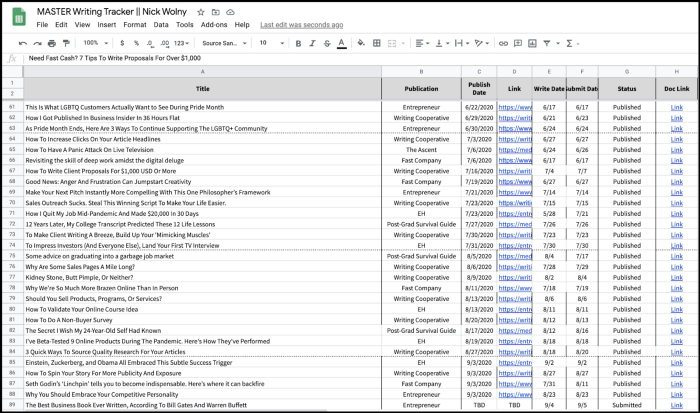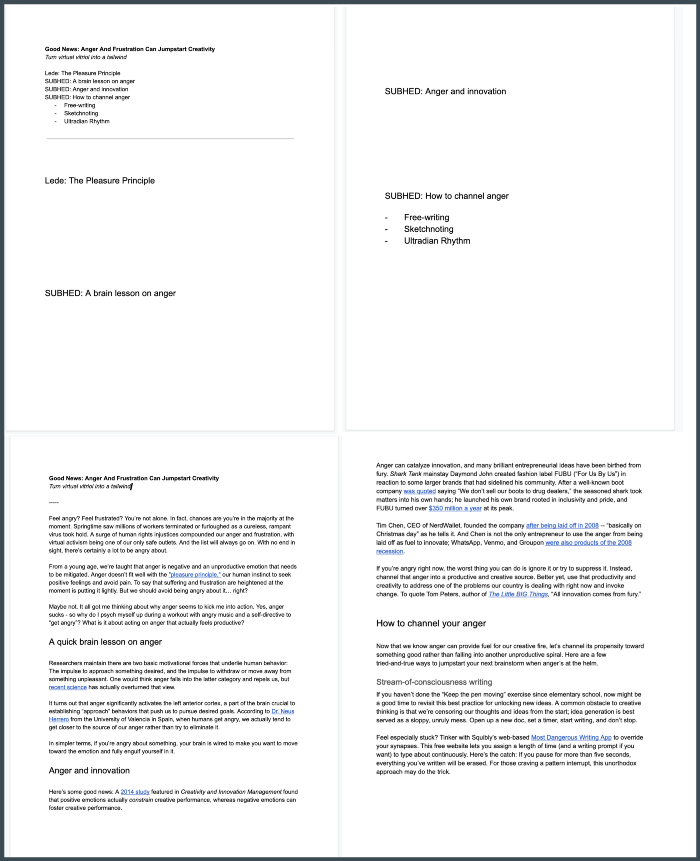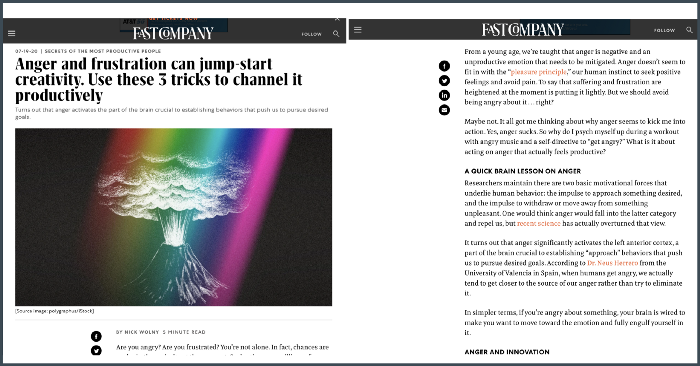As I navigate my thirties, I realize more and more that going to music school wasn’t such a bad career move after all. Yes, I locked myself into a practice room for hours each day and practiced passages written 250 years ago. Yes, I shunned all networking that didn’t relate to nerding out about brass quintets or Mozart concertos. And yes, I took out the maximum amount of student loans I could in order to not be burdened with a part-time job, but then used that free time to pursue stupid benchmarks like memorizing every Lady Gaga Fame Monster song in every key, muscle memory that over a decade later is still perfectly chiseled into my synapses.
Pop star pursuits aside, mastering a craft taught me an incredibly important skill: How to work on something every day even when you really don’t feel like it. I practiced the French Horn for at least an hour nearly every day, and only missed a few days a year every year for about a decade.
This skill set is critical if you want to write articles while also juggling a full time job, because you’ll often have to log words when your energy and attention levels are less than ideal. Before I left my day job, I had small, specific windows of time — usually pockets of the day in the early morning or late evening — in which I could kick out articles.
3 Tips For Writing Articles Consistently If You Have A Day Job - Post Outline
Once 9am hit, it was game over and there were fires everywhere at the office. Writing when I didn’t feel like it, and especially before my first cup of coffee, helped me adopt rituals that work even if you’re feeling a little drained, which is just about everyone these days.
“Mastering a craft taught me an incredibly important skill: How to work on something every day even when you really don’t feel like it.”
You might find some of these tips helpful as well as you get started on your writing journey, especially if you see article writing as a way for you to build your online presence and eventually pursue a side hustle or consulting career. So here are three personal writing rituals that build consistency even if you have a day job.
Tip #1: Keep An Idea Bank -- But Don't Let It Sabotage You
There’s nothing worse than moving mountains to free up two hours of your day to write, only to spend that time staring at a blank page and making no progress whatsoever. To prevent this as much as possible, have a repository of ideas ready to go. Then when you sit down to write, write about the next article in your queue - even if you don’t feel like it.
I keep a document that has my past articles as well as upcoming article ideas and what stage these articles are in, and I teach clients to do the same. I keep it as a Google sheet for easy reference, and have it bookmarked on my bookmarks bar.


Then, below this information, I also have a section for chicken scratch or future ideas. Some of these go into my queue quickly, while others sit at the bottom of the spreadsheet for days or weeks. It depends on where I feel I have the most momentum.

The reason I keep all these sections separate is that when you make a list of ideas to write about, the list itself can paralyze you if you’re not careful. You’ll start to write about one topic, and as soon as resistance rears its ugly head, you’ll feel tempted to move on to another topic and see if it feels easier. Then you end up with a bunch of crummy first drafts and no actual progress.
Maintain a list of ideas. Then let your list of ideas tell you what to write next. With a little concentration — and the drafts approach we’ll discuss in just a moment — you’ll be able to bring your idea to fruition much more quickly.
Tip #2: "Ladder" Your Article Outlines
So simple, yet so helpful! If you find you have to start and stop a lot throughout the week, consider laddering the sub-headlines of your article in a document. I like to take a loose outline or idea I have and space out the subheads or different checkpoints I’ll reach when I go to write my first draft.

This not only helps me write drafts faster, but also gives me a scaffolding I can hang my thoughts off of from session to session. The reality is it usually will take more than one session to pump out an article when you’re getting started, unless you have a large uninterrupted block of time in your day, which most people don’t.

Once you’ve spaced out your sub-headlines and thoughts, you’ll be able to leave your document and come back to it -- sometimes days later -- and be able to get back into your flow much more easily. This setup can help give you productivity gains in a way that other articles do not.
Tip #3: Know Which Draft You're In and Adjust Accordingly
Once my outline is laddered in my Google Doc, I sit down and write a first draft all in one blast. And lemme tell ya — it’s usually pretty bad. I get the words on the page, and that’s about it in terms of quality. Most new writers struggle to do this, though!
Challenge yourself to pump out a crappy first draft, and resist bouncing around the page. Start at the top, work your way down, even if what you’re writing doesn’t make sense at first, and get the words on the page. It’s much easier to mold an ugly block of clay into sculpture than have a sculpture be perfect on the very first pass.
After your first draft, go back through and begin to chisel away at your article. This second draft process can be taxing, and I have a number of pet names for the second draft. “Surgical second draft” has been the moniker of choice lately; just like a surgeon, I’m taking a measured and patient approach to each sentence and paragraph to ensure it makes sense. In second drafts, focus more on logic and less on word choice.
After this, I take a breather to clear my head. Then I come back to an article with a fresh brain, take one more pass, and swap out any words or phrases to make them sound more like me. This third draft is fun and can give your writing a little more sparkle while still making sense and adding value to others.
----
If you have a day job, that doesn’t mean you can’t pursue article writing with the same excitement and vigor as full-time writers. It just means you have to prioritize your time and attention differently to get results. Keep a bank of ideas, build a scaffolding that supports you, and adjust your approach for different drafts, and you’ll be pumping out articles like the pros in no time.
Thanks for reading. 🙏🏼
Keep up the momentum with one or more of these next steps:
📣 Share this post with your network or a friend. Sharing helps spread the word, and posts are formatted to be both easy to read and easy to curate – you'll look savvy and informed.
📲 Hang out with me on another platform. I'm active on Medium, Instagram, and LinkedIn – if you're on any of those, say hello.
📬 Sign up for my free email list. This is where my best, most exclusive and most valuable content gets published. Use any of the signup boxes in this article, or go to the newsletter page here.
🏕 Up your marketing game: Camp Wordsmith™ is my business and writing program for small business owners and online entrepreneurs. Get instant access to resources and templates guaranteed to make your marketing hustle faster, better, easier, and more fun. (It's also "glamping"-themed – who doesn't love luxurious camping?!) Learn more here.
📊 Hire my marketing company: Hefty Media Group provides consultation and done-for-you services in content marketing. We're a certified diversity supplier with the National Gay & Lesbian Chamber of Commerce, and we'll make you sound damn good via the written word. Learn more here.
© 2021, 2022, Hefty Media Group. All Rights Reserved.


